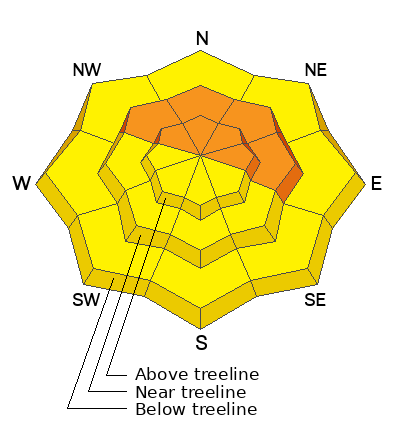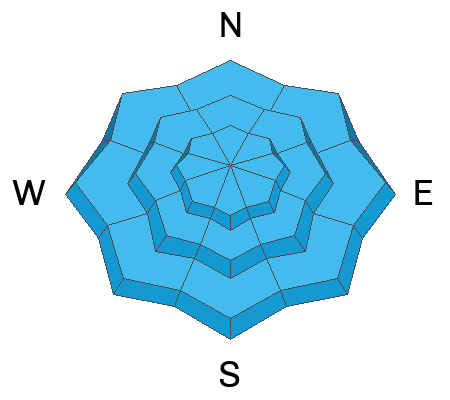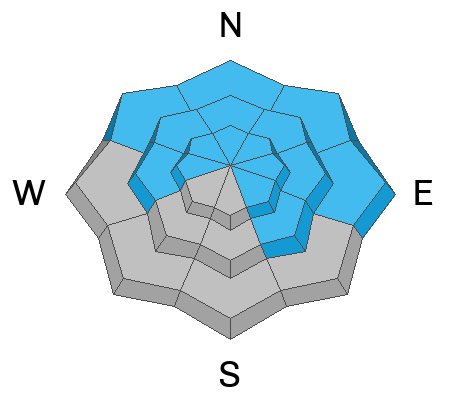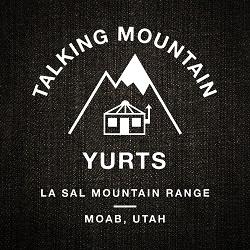Forecast for the Moab Area Mountains

Issued by Eric Trenbeath on
Tuesday morning, March 5, 2024
Tuesday morning, March 5, 2024
The avalanche danger is CONSIDERABLE on steep slopes near treeline and above that face NW-N-E. Human triggered avalanches involving slabs of wind drifted snow up to 2' deep are likely. In these same areas, deep drifts have added stress to a buried persistent weak layer increasing the likelihood for a much deeper avalanche. Backcountry travelers should avoid all steep, wind drifted, northerly facing terrain.
A MODERATE danger for wind slab avalanches can be found on all other aspects and elevations. Wind drifts are often recognizable by their smooth rounded appearance, and cracking or collapsing is a sign of instability. Avoid steep slopes that have recent deposits of wind drifted snow.

Low
Moderate
Considerable
High
Extreme
Learn how to read the forecast here
 Special Announcements
Special Announcements
We are seeking a passionate individual to join us as Executive Director of the nonprofit Utah Avalanche Center. Click here for more information.
Road Conditions: Grand County plowed the Geyser Pass Road to the winter trailhead on Monday.
Grooming: Trails have not been groomed since the recent storm.
 Weather and Snow
Weather and Snow
6:00 a.m. Snow and Weather Data
24 Hour Snow 0" 72 Hour Snow 8" Season Total Snow 143" Depth at Gold Basin 54"
Winds on Pre-Laurel Peak: SW 10-15 Temp 21° Percent of Normal: 101%
Weather
Winds have finally backed off as zonal flow and an unsettled weather pattern take over. Today, look for mostly cloudy skies, light to moderate WSW winds, and high temps near 30 degrees at 10,000'. Our next chance for snow comes on Thursday when a cutoff low currently over the Pacific moves into the region. The system has good jet support and plenty of moisture, but the current track looks to be south of our area.
General Conditions
In our travels yesterday, Dave and I concluded that overall conditions are one star but that's still a huge improvement. 8" of new snow Saturday night was wildly blown and unevenly distributed and most open terrain has some degree of wind affect. Sheltered locations offer much better conditions. We continued to observe active blowing and drifting of the most recent snow, and we found wind slabs formed over the past couple of days to be widely distributed across the landscape. They varied in depth from 6"-24" with the deepest drifts found on north and easterly aspects. On southerly aspects, drifts are shallow and more isolated, often existing next to scoured surfaces. We did not observe much cracking, but we experienced several collapses indicating that slabs of wind drifted snow remain sensitive to the weight of a skier or rider.
On steep, northerly aspects, deep drifts have added stress to a persistent weak layer (PWL) of faceted snow near the base of the snowpack. This has increased the likelihood for triggering a deeper and more dangerous avalanche. We are uncertain to what degree this load has affected the PWL, and we've been wrestling with how to quantify the likelihood of triggering a deep avalanche for some time now. For more details on that see my recent blog post. The bottom line is that Dave and I are continuing to avoid big, steep, northerly facing slopes.
Snowpack and Weather Data
Gold Basin Storm Stake (10,000')
Gold Basin SNOTEL site (10,000')
Wind Station on Pre-Laurel Peak (11,400')
Avalanche Problem #1
Wind Drifted Snow
Type
Location

Likelihood
Size
Description
Strong winds from the south and west have blown and drifted snow at all elevations. The problem is most pronounced on leeward-facing slopes near treeline and above where drifted snow has formed slabs 12-24 inches deep. Slopes that face NW-N-E are the bulls-eye location for this problem. Wind slabs will be slightly more stubborn to trigger today meaning that you may be further down slope before they release. Cracking, collapsing, and hollow sounds are obvious clues that you have stepped onto an unstable drift.
It is possible to encounter recent drifts on windward aspects as well. Strong winds often swirl and change direction in the mountains and can deposit snow on any aspect. On slopes that face W-S-SE, this problem will be more isolated. Many southerly facing slopes may be scoured, but look for fresh drifts around terrain features that facilitate loading such as gully walls, under cliff bands, along sub-ridges, beneath convexities, and in scoops, saddles, and sinks.
Avalanche Problem #2
Persistent Weak Layer
Type
Location

Likelihood
Size
Description
For some time, we have remained in a low likelihood, high consequence scenario for avalanches failing down to the persistent weak layer (PWL). Deep wind-drifts have formed on the same slopes that harbor weak layers of faceted snow, adding stress to the layer and increasing the likelihood of triggering a deep and very dangerous avalanche. Triggering an avalanche in wind-drifted snow remains your primary concern, but any avalanche triggered in wind-drifted snow has the potential to step down to the deeply buried PWL. Give the buried weak layer some time to adjust to the new load and look for safe and fun riding in sheltered, low-angle terrain.
Additional Information
Want some more insight into the La Sal Mountains as well as the communal impacts of a tragic avalanche? Check out the latest UAC podcast with forecaster Eric Trenbeath where he discusses the range, it's often treacherous snowpack, and how the devastating avalanche in February, 1992, affected the Moab community.
Our avalanche beacon checker sign and beacon training park are up and running. A huge thanks to Talking Mountain Yurts for sponsoring those this season!
Sign up for forecast region-specific text message alerts. You will receive messages about changing avalanche conditions, watches, warnings and road plowing closures.
Follow us on Instagram @utavy_moab
General Announcements
This forecast is from the U.S.D.A. Forest Service, which is solely responsible for its content. This forecast describes general avalanche conditions and local variations always occur.




